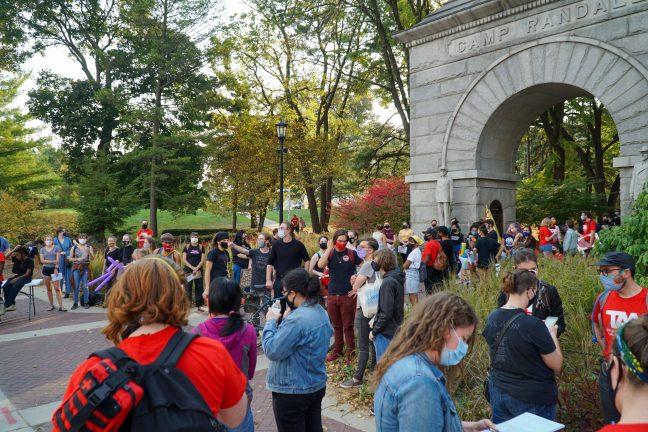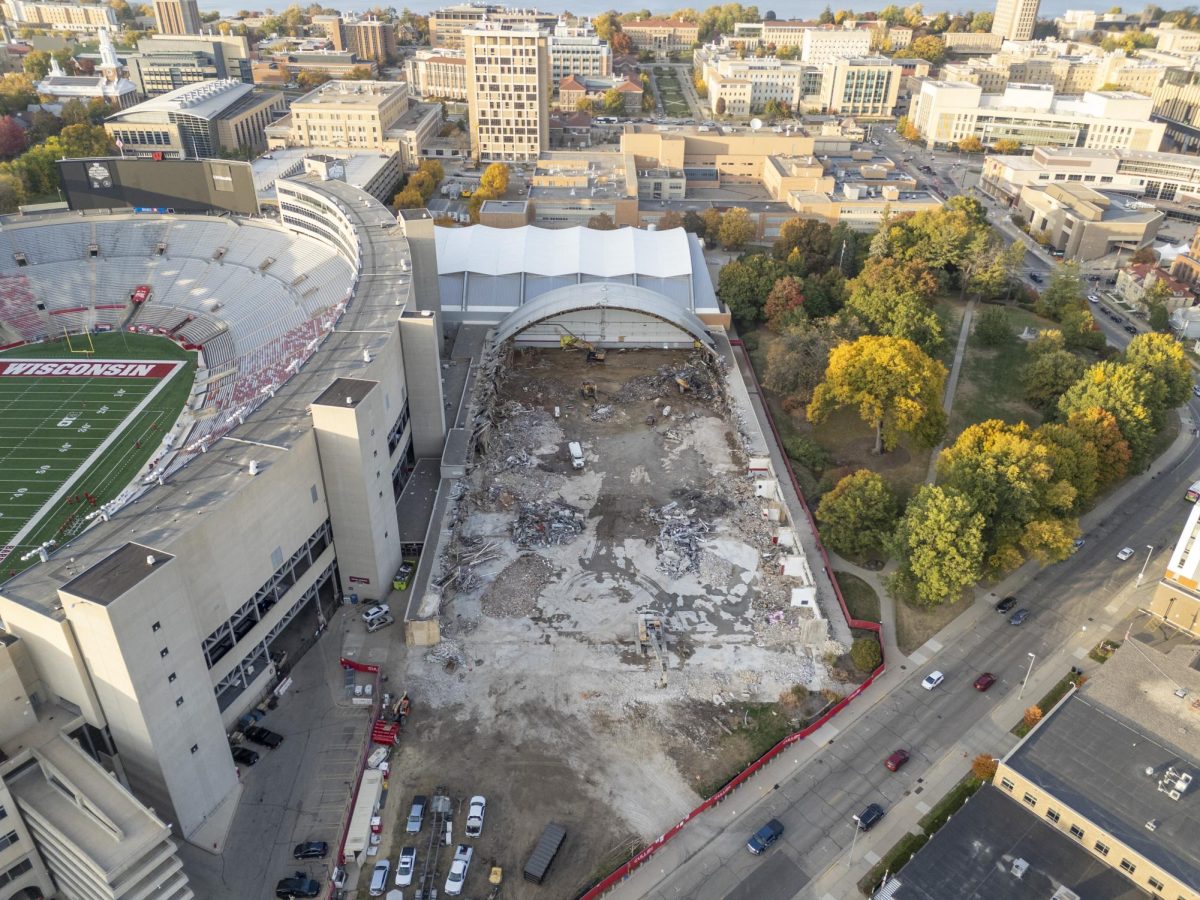When Danny Alexopoulos transferred from the University of Milwaukee to the University of Madison in fall 2019, he wasted no time in adjusting to campus life and making new friends.
Transferring schools felt like a new start with new people, new classes and a new environment. Though he felt overwhelmed at times, he enjoyed the transition as much as he could, Alexopoulos said.
If he had transferred just a semester later, his experience would have been completely different, Alexopoulos said.
UW-Madison’s campus closed during a COVID-19 lockdown on March 15, 2020. The following 2020-2021 school year was held mostly online, with few in-person classes, events or involvement opportunities.
As Alexopoulos said, he transferred at the right time to adjust to in-person classes and make connections with his peers. But many other transfer students, especially those who arrived in 2020, had a uniquely challenging experience being stuck online and not being able to meet their classmates face-to-face, Transfer Transition Coordinator Shelby Knuth said.
UPDATED: Parking Enforcement Unit to be transferred from MPD to Parking Utility
Knuth works with the Transfer Transition Program, which aims to help transfer students acclimate to UW.
As Transfer Transition Coordinator, Knuth focuses on supporting first-year transfer students and coordinating events to help them connect with one another, Knuth said.
But during lockdown, student participation in TTP programming decreased dramatically, Knuth said.
“Our engagement numbers were totally down, and I didn’t really get to know incoming students the way I do when we’re in person,” Knuth said.
Knuth said this was probably because of the online format of their events — few students wanted to spend more time looking at a screen than they already had to for class.
Transfer student Christine Ruan understands screen fatigue too, admitting it was difficult to motivate herself to watch lectures online, much less make connections virtually, she said.
“That year and a half was really hard for me,” Ruan said.
UW starts counting Minnesota residents and transfer students in resident enrollment report
Getting used to class sizes was difficult as well, Ruan said, because she transferred from University of Wisconsin-Superior, a much smaller school than UW-Madison.
One of her friends struggled with the transition too, Ruan said. Last year, her friend transferred to UW-Madison, but because of the pandemic, she took all her classes online in China, Ruan said.
This semester, she’s a senior, but it’s her first time being on campus, so it’s been a difficult adjustment for her, Ruan said.
This is common for transfer students, Knuth said, even before the pandemic, the sheer size of UW can make many transfer students feel isolated.
“It’s such a large campus and it may be hard to see, but there are a lot of students out there in similar situations,” Knuth said.
UW to cover tuition, segregated fees for middle, low-income students
This semester, around 1,200 transfer students arrived at UW, which is average for fall, Knuth said. There are about 4,000 transfer students on campus at all times, Knuth said.
Alexopoulos, Ruan and Knuth all agreed getting involved on campus is a great way for transfer students to feel more at home at UW.
That’s exactly what Ruan did — she got involved in the TTP and got to know other students who had experiences similar to hers, she said.
Now, she works with TTP as a transfer student coordinator, she said.
Transfer student coordinators are students who have transferred to UW and who can serve as peer mentors to new transfer students, according to the TTP website. They help their fellow students navigate resources, connect them to involvement opportunities and provide one-on-one support to make their transition feel less overwhelming, the TTP website states.
Badger Promise program helps financially disadvantaged students make most of UW
Alexopoulos is now a transfer student coordinator as well.
“I went through my fair share of challenges and struggles here my first semester, so I thought it would be nice to give back and provide a different perspective to students that are coming in,” Alexopoulos said.
Of course, there are countless other ways to get involved on campus too — from student organizations to volunteering opportunities to campus-wide events — and transfer student coordinators can help guide students towards the many options at their disposal, according to the TTP website.
Getting involved isn’t just a good way to make friends — it can improve mental health, feelings of belonging and grades as well, Knuth said.
“That can seem counterintuitive in your first semester when you think, ‘I need to study, study, study,’” Knuth said. “But getting involved can actually help them with that, because if you have better mental health outcomes, it’s easier to study.”
Wisconsin Republicans break party ideologies in regulating UW COVID-19 policies
The transfer student population is incredibly diverse, containing large percentages of first-generation students, returning adult students and international students, Knuth said. It has nearly double the amount of low-income students than the overall student body, Knuth said.
All of these different groups within the transfer student population all have unique needs and the TTP is there to help fulfill those needs, Knuth said.
But despite the many differences among the transfer student population, all of them will have ups and downs in their feelings of confidence and all of them need to feel like they belong at UW-Madison, Knuth said.
Events include lunches for returning adult students and BIPOC students, according to the TTP newsletter, which students can sign up for to stay informed about similar opportunities.
UW announces face masks will be required in all campus buildings again
In addition to events, the TTP has a Transfer Engagement Center where students can meet, study and connect with advisors, according to the TTP website. The center is located in 110 Middleton Building, 1305 Linden Drive and is open 8:00 a.m. to 8:00 p.m. Monday through Thursday and 8:00 a.m. to 2:00 p.m. on Friday, according to the website.
It’s normal for a transfer student to struggle, especially mid-semester once the initial excitement of being on campus begins to wear off, but it’s important for them to remember they belong here, Knuth said.
Even if they’re having a hard time, they were accepted into the school, so evidently several people read their application and agreed they could succeed here, Knuth said.
“It’s hard,” Knuth said. “There might be times where you trip up or things don’t go perfect and that’s 100% okay and expected. You know, it’s gonna feel better. This is a temporary transition and they will get their footing.”














